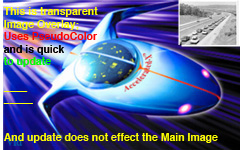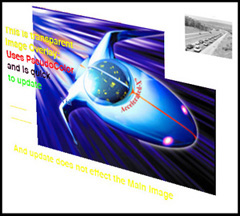|
|||
|
The use of image overlays and video windows, often in the same display, is common in X graphics systems in industrial/military applications. Image Overlays use what is logically a transparent plane "overlaying" the main image. Generally the main image plane has 24-bit color, (TrueColor), while the image overlay plane uses 8-bit (PseudoColor). An XVideo window is logically a plane that "underlies" the main image. Its color depth can be 8, 16. or 24-bit, and it can be seen in the display by the use of a transparent "window" in the main image plane. See the figures below. P |
|||
|
|||
|
|||

